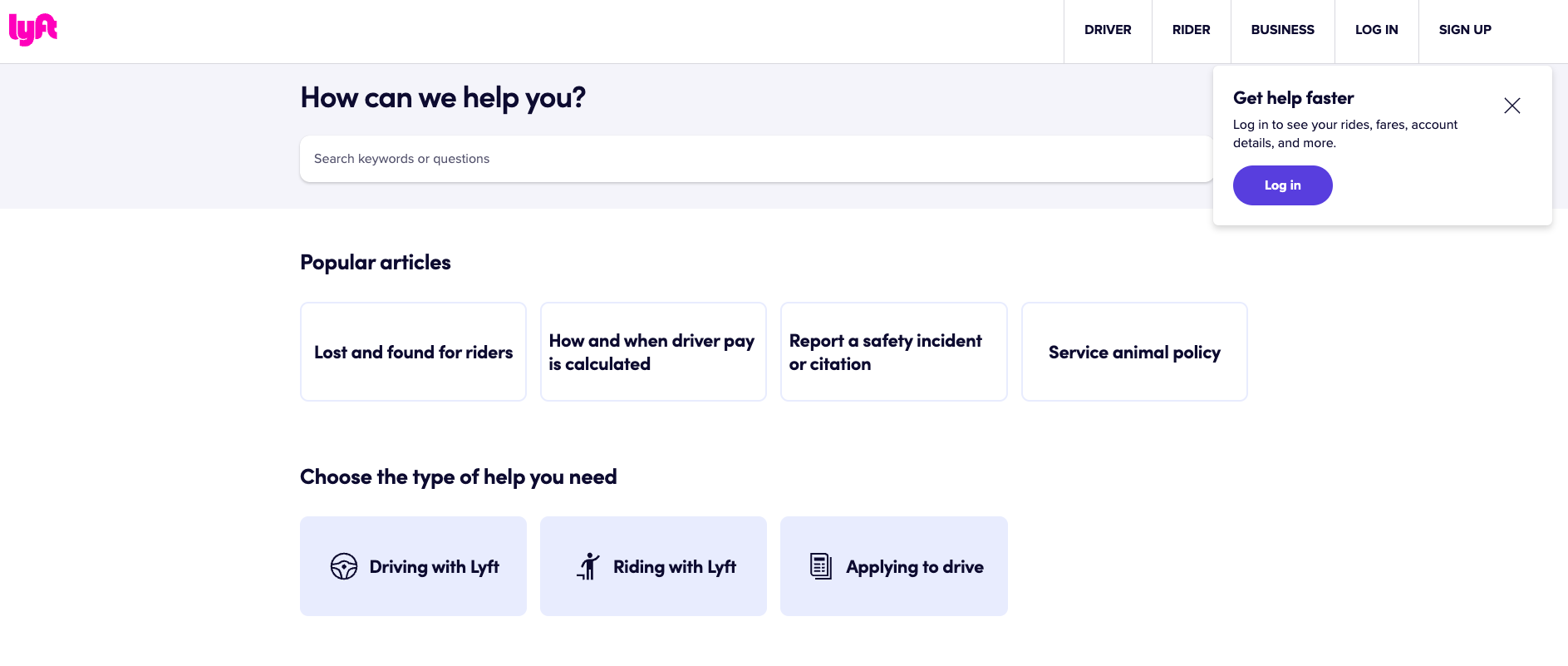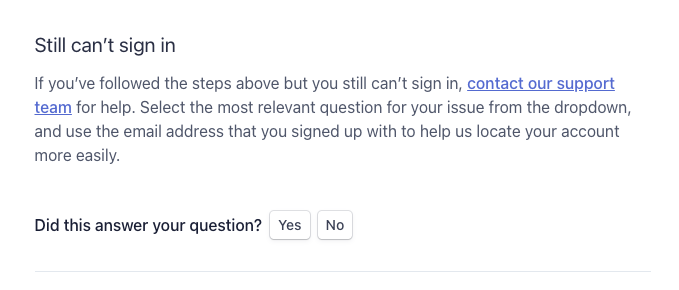From FAQs to chatbots: A complete guide to customer self-service
Time to read:
Quality self-service is a vital part of a comprehensive customer service strategy. It empowers customers to find solutions, creates a positive experience, and reduces the workload for contact center agents.
But to gain all these benefits, businesses must implement effective self-service tools and resources that meet customers’ needs. So where do you begin?
In this post, we’ll explore what customer self-service is, its advantages, most common types, and best practices to provide top-notch self-service.
What is customer self-service?
Customer self-service refers to customers solving their issues or questions with the resources your business provides—without contacting a customer support agent.
Self-service tools include FAQ pages, help centers, AI-powered assistants, and more. (We’ll dive deeper into each type below.)
But first, let’s start with the benefits of self-service customer support.
What are the advantages of customer self-service?
Customer self-service has advantages for customers and businesses alike, including:
- It improves the customer experience. Self-service tools allow you to meet the needs of customers who prefer not to contact support—and there are many of them. In fact, 36% of consumers admit they’d rather lose their internet for a day, go through airport security, or shave their head than contact support.
- It provides faster resolution. Self-service resources allow customers to find answers without having to wait in the call queue for a call center agent or a live chat response. This enables them to reach a resolution faster, contributing to a positive experience.
- It’s always available. Self-service tools are available 24/7, meaning customers can resolve their inquiries regardless of the day or time. This can save customers the frustration of having to wait until your contact center’s operating hours to get a resolution.
- It frees up customer service agents’ time. Self-service allows customers to find answers or perform straightforward actions without a human agent’s help. This means agents have more time to help customers with complex issues.
- It reduces call center costs. Self-service can help your contact center incur lower usage costs by reducing the amount of calls agents have to take to answer common questions. It can also help you keep staffing costs low—less calls require fewer agents to answer them.
- It can be a useful resource for agents. Self-service resources, like knowledge bases, can help agents find answers to customers’ questions quickly. And if your call center uses AI-powered agent assistance, like Google Cloud Contact Center AI, it can recommend resources from your knowledge base to agents based on customers’ input in real time.
- It’s part of a successful customer onboarding process. Self-service tools give new customers a starting point to learn about your product or service. Recommend relevant tutorials and FAQ pages throughout the onboarding process to anticipate customers’ common questions and set them up for success.
Types of self-service
The type of self-service that suits your customers’ needs depends on your product or industry. For example, retail businesses often require FAQ pages and chatbots to help customers with purchase questions, while software businesses might need to provide in-depth tutorials and documentation.
Let’s take a look at the most common types of self-service.
FAQ page
Customers with basic questions often start with a business’s FAQ page. This is where they expect to find answers to questions like:
- What are your business hours?
- What’s your return policy?
- Is there accessible seating at your venue?
- What does your membership program offer?
An organized, searchable FAQ page enables customers to find their answers quickly and reduces calls to your contact center. (We’ll dive deeper into user-friendly organization in the best practices section below.)
Knowledge base or help center
A knowledge base or help center provides customers with answers to more in-depth questions than an FAQ page can cover. These are often repositories for resources like:
- Product tutorials
- Step-by-step instructions
- Troubleshooting tips
- Guides and reports
- Developer documentation
Community forum
Community forums provide a space for customers to support each other, like sharing their solutions to common issues or pro tips to make the most of your product features.
Loyal customers know your product well, making them a great resource for creative solutions and use cases. Hosting a forum helps you create a sense of community, gives you insight into product bugs and issues, and allows you to set guidelines for the discussion.
The most effective community forums typically include search functionality where customers can input specific keywords or questions and an organized page structure with categories for specific products or use cases.
IVR menu
An interactive voice response (IVR) menu allows customers calling your call center to get fast resolution without a live agent. For example, callers can get a prescription refill by inputting their data into the IVR system, which routes the request automatically.
Chatbot
A rules-based chatbot can offer customers text-based support for straightforward inquiries without a live agent, similar to an IVR. For example, a customer can initiate a return for a purchase via a chatbot by providing basic information, like an order number and mailing or email address.
AI-powered IVA
Intelligent virtual assistants (IVAs) can provide more robust support than rules-based IVR menus and chatbots because these can understand complex customer requests and respond in a natural, conversational manner. This is thanks to natural language processing and generative AI, which allow IVAs to interpret customer input and craft a tailored response.
Customer self-service best practices (with examples)
Now, let’s look at eight best practices, along with examples of effective customer self-service.
1. Make it accessible
Make your self-service tools accessible to customers by:
- Including resources, like your FAQ page and help center, in your main website navigation and footer
- Placing a chatbot button on every page of your website or app
- Following IVR best practices to ensure customers can find the right option quickly without navigating through a long menu
- Using clear calls to action to direct users to self-service resources
For example, on the Chime website, users can navigate to the Learn tab in the main navigation and find self-service options, like the blog, help center, and FAQs.

2. Make it user-friendly
Ensure your self-service tools are user-friendly, meaning there’s a clear path for customers to find the information they need. This includes:
- A well-organized navigation menu with categories that help the customer find the right page. For example, on an FAQ page for a concert venue, menu categories could include:
- Tickets
- Seating chart
- Accessibility
- Parking
- Food and beverage
- A search bar (with a robust search functionality) that allows customers to input keywords to find specific pages or solutions.
For example, the Lyft help center gives customers multiple ways to find answers, including a search bar, the most popular articles, and broad categories that allow users to narrow their search. Plus, when signed into their account, a user can find tailored support related to their rides and fares. (More on personalization later.)

3. Make it mobile-friendly
Ensure customers can navigate your resources on any device by designing responsive pages that adapt accordingly. Many customers will access your self-service resources on their phones, and without optimized pages for mobile, this will create a negative customer experience.
4. Use multimedia content
Create different types of content depending on the topic and amount of detail it requires. For example, text works well for FAQ pages that require basic answers, while videos work best for in-depth product tutorials.
For example, the Shopify help center offers video tutorials for topics like an introduction to the platform and how to migrate to Shopify.

5. Leverage AI
Implement AI tools to provide more comprehensive service, such as routing customers to the appropriate resources and enhancing automated voice and text support. Generative AI tools can also help you improve your existing self-service resources, create new ones, and analyze customer sentiment to improve your support strategy.
Read more about How to use AI to improve customer service.
6. Personalize interactions
Leverage customer data to personalize customer interactions with self-service tools like chatbots and IVAs. For example, a chatbot integrated with your customer data platform (CDP) can expedite a customer’s return request by referencing their last purchase and mailing address. This saves the customer the time it takes to provide this information and creates a more seamless experience.
7. Iterate and improve
Gather customer feedback through surveys and reviews to measure the effectiveness of your self-service resources and identify areas for improvement.
For example, at the bottom of a knowledge base page, ask customers if it answered their question. With a yes or no response, customers can provide immediate feedback that helps you improve your process.
This is what Stripe implements on its help pages, as you can see below. Plus, this article provides customers with a direct link to contact support if they still have unresolved issues, which we’ll discuss next.

8. Provide a clear path to contact support
Give customers a clear path to contact a human agent when self-service doesn’t suffice. For example, include a live chat button in your knowledge base for customers to initiate a conversation if they don’t find their answer. Or include the option to dial 0 to speak to a representative at the end of every IVR menu.
Serve customers better with Twilio Flex
Customer self-service is only one piece of a larger customer experience strategy. For a comprehensive customer service experience, businesses must also provide personalized support on customers’ preferred channels. Twilio Flex enables you to do just that.
Flex is an omnichannel contact center platform that integrates with your existing systems to create a seamless customer experience across channels. Like its name suggests, it’s a flexible, customizable platform that enables you to build a new contact center or augment your existing solution with digital channels.
Not sure if you need a contact center just yet? Twilio has various customer experience solutions to help you deliver a personalized experience, including:
- IVR: Build a modern IVR solution that helps customers find the support they need quickly and helps you reduce operational costs.
- CDP: Unify your customer data and build customer profiles that allow you to deliver personalization at scale.
- Messaging: Support customers on their preferred messaging platform, including SMS, MMS, WhatsApp, and webchat.
Discover everything you can build with Twilio and start creating a better customer experience today.
Related Posts
Related Resources
Twilio Docs
From APIs to SDKs to sample apps
API reference documentation, SDKs, helper libraries, quickstarts, and tutorials for your language and platform.
Resource Center
The latest ebooks, industry reports, and webinars
Learn from customer engagement experts to improve your own communication.
Ahoy
Twilio's developer community hub
Best practices, code samples, and inspiration to build communications and digital engagement experiences.


